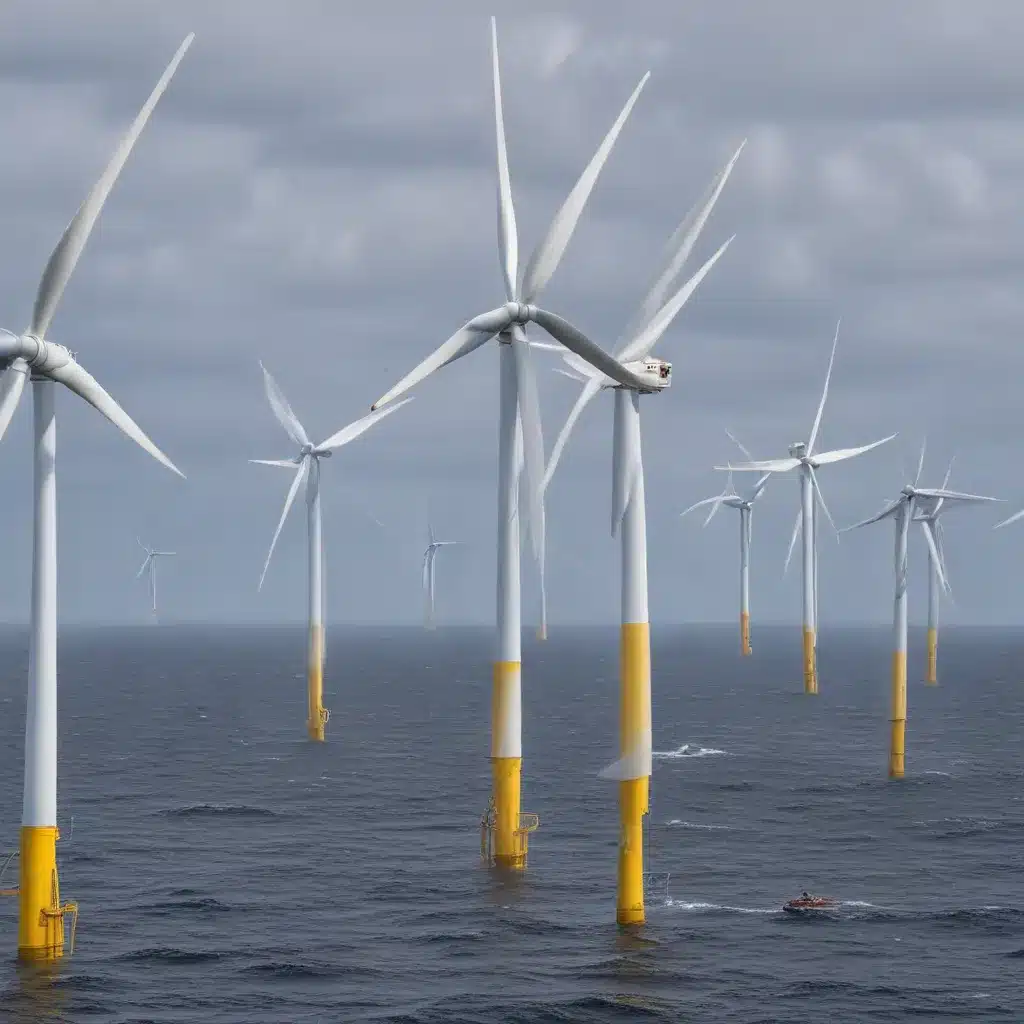
Europe has long been at the forefront of the renewable energy revolution, and the continent’s burgeoning offshore wind sector is a prime example of this leadership. As nations across the region strive to meet ambitious climate goals and reduce their carbon footprints, the development of innovative offshore wind technologies has emerged as a critical component of the energy transition.
Emerging Technologies
One of the most significant advancements in the offshore wind landscape is the rise of floating offshore wind platforms. Unlike traditional fixed-bottom offshore wind turbines, which are limited to relatively shallow waters, floating platforms allow for the deployment of wind farms in deeper, more wind-abundant areas of the ocean. Countries like Norway, Portugal, and Scotland have already commissioned pioneering floating wind projects, harnessing the strong, consistent winds found farther from shore.
These floating wind technologies, which leverage innovative mooring and anchoring systems, have opened up vast new areas for renewable energy generation. By unlocking access to stronger, more reliable wind resources, floating offshore wind is poised to play a crucial role in Europe’s clean energy future.
Grid Integration Challenges
As the deployment of offshore wind farms continues to accelerate, the industry must also grapple with the complexities of grid integration. Effectively connecting these large-scale, remote projects to onshore electrical grids requires robust transmission infrastructure and sophisticated grid balancing strategies. European policymakers and grid operators are working to address these challenges, exploring innovative solutions like offshore substations, high-voltage direct current (HVDC) cables, and advanced forecasting and control systems.
Environmental Considerations
Alongside the technical advancements, the offshore wind sector must also navigate environmental concerns to ensure the sustainability of its projects. Careful site selection, wildlife impact assessments, and the implementation of mitigation measures are essential to minimizing the ecological footprint of offshore wind farms. European nations are collaborating with researchers and environmental organizations to develop best practices and regulatory frameworks that balance renewable energy goals with the protection of marine ecosystems.
Policy and Regulatory Frameworks
EU Offshore Wind Initiatives
At the European Union level, ambitious policies and initiatives are driving the growth of offshore wind. The EU’s Offshore Renewable Energy Strategy, launched in 2020, sets a target of at least 60 GW of offshore wind capacity by 2030 and 300 GW by 2050. This strategy, combined with the EU’s broader Green Deal and Fit for 55 initiatives, is providing a clear regulatory framework and financial incentives to accelerate offshore wind deployment across the continent.
National Strategies
Individual European nations have also developed their own robust offshore wind strategies, tailored to their unique geographic and energy landscapes. Countries like the United Kingdom, Germany, and the Netherlands have set bold national targets, backed by comprehensive policy support and regulatory frameworks. These national initiatives are crucial for providing certainty to investors and driving coordinated, large-scale offshore wind development.
Financing and Incentives
Recognizing the capital-intensive nature of offshore wind projects, European policymakers have implemented a range of financing mechanisms and incentives to support the industry. Feed-in tariffs, Contracts for Difference (CfD), and other revenue support schemes have helped to de-risk offshore wind investments and ensure the financial viability of projects. Additionally, the European Investment Bank and national development banks are providing vital project financing and loan guarantees to catalyze the sector’s growth.
Floating Offshore Wind Developments
Innovative Turbine Designs
As floating offshore wind technologies continue to evolve, researchers and developers are pushing the boundaries of turbine design. Advancements in blade aerodynamics, generator technologies, and control systems are enhancing the energy yield and operational efficiency of these floating wind platforms. Companies like Principle Power, Equinor, and Stiesdal are leading the charge with innovative floating wind turbine designs that are tailored to the unique challenges of the offshore environment.
Mooring and Anchoring Systems
The stability and reliability of floating offshore wind farms are critical to their long-term success. Innovative mooring and anchoring systems, such as semi-submersible and tension-leg platforms, are being developed to ensure the secure positioning of these floating structures in harsh marine conditions. Researchers are also exploring the use of suction-anchored moorings and gravity-based foundations to further enhance the resilience and cost-effectiveness of floating offshore wind projects.
Supply Chain and Logistics
Manufacturing and Installation
As the offshore wind sector continues to expand, the development of robust supply chains and logistical capabilities has become increasingly important. European nations are investing in specialized manufacturing facilities and port infrastructure to support the construction and deployment of larger, more powerful offshore wind turbines and platforms. Innovations in installation techniques, such as the use of heavy-lift vessels and modular assembly, are also helping to streamline the deployment process and reduce costs.
Operations and Maintenance
Ensuring the long-term reliability and performance of offshore wind farms is essential to their economic viability. European operators are leveraging predictive maintenance strategies, remote monitoring, and data-driven analytics to optimize the operations and maintenance (O&M) of their offshore assets. Additionally, the development of service vessels and logistical hubs dedicated to offshore wind are enhancing the efficiency and cost-effectiveness of ongoing O&M activities.
The European offshore wind sector is at the forefront of the global renewable energy revolution, driven by a combination of technological innovation, policy support, and collaborative initiatives. As the continent continues to unlock the vast potential of its offshore wind resources, it is poised to play a pivotal role in the transition to a sustainable, low-carbon energy future. By harnessing the power of the wind and continuously pushing the boundaries of what is possible, Europe is demonstrating the transformative potential of renewable energy and setting a inspiring example for the rest of the world.
To learn more about the latest developments in the European renewable energy landscape, visit the European Future Energy Forum.







